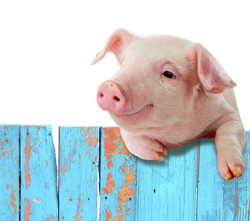A genetic test to screen healthy pigs
Congenital diseases are quite common in swine and they cover a wide range of undesirable conditions, including hernias, anatomical defect and ataxia. These abnormalities lead to poor animal welfare and economic losses, posing a significant problem for pig producers and breeding companies.The aim of the EU-funded 'Towards marker assisted selection against genetic defects in pigs' (PIGENDEF)(opens in new window) project was to provide insight into the genetic background of congenital genetic defects in pigs. The consortium consisted of scientific groups and companies active in pig breeding. The research was focused on three swine defects, namely inguinal hernia, umbilical hernia and cryptorchidism, and the plan was to identify associated genes.To this end, researchers performed genome-wide association studies (GWASs) in porcine samples from Belgium and Norway for genetic markers (single nucleotide polymorphisms (SNPs)) linked with a predisposition to the aforementioned defects. Over 120 SNPs associated with umbilical hernia were located on chromosomes 5 and 14, which were identified as significant quantitative trait locus regions. Two genes on chromosome 14 were found to contain some significant SNPs in the Norwegian swine lines.This SNP panel was formulated into a genetic test and will be implemented for selection against the prevalence of umbilical hernia in Norway's breeding programmes. This is expected to improve the efficiency and profitability of animal production and, therefore, the competitiveness of the small business partners. Under the overall framework of European policies on sustainability and on animal health and welfare, PIGENDEF partners envision a causative mutation for umbilical hernia to be identified in the immediate future.



